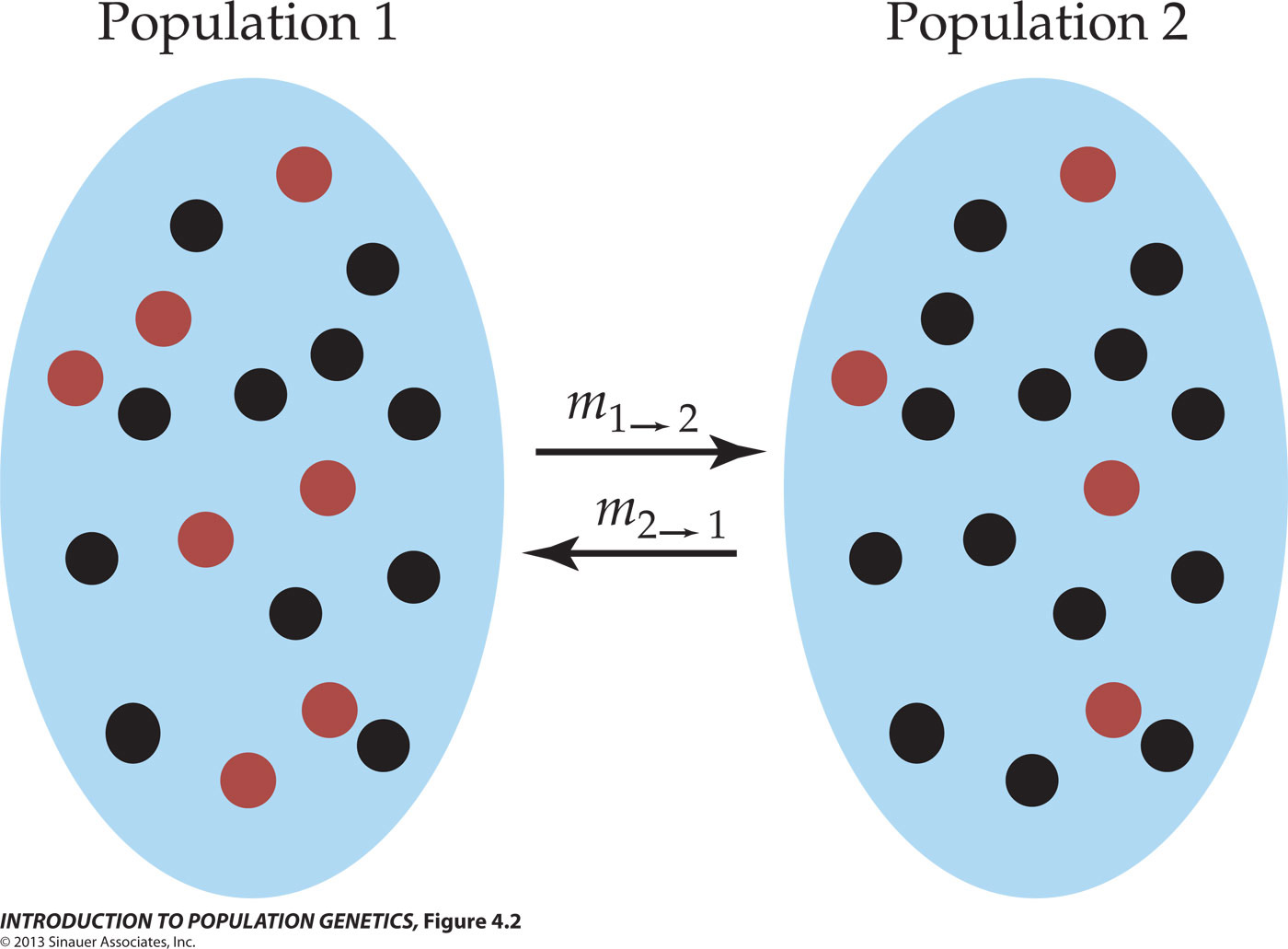
Bi-Directional Gene Flow between Two Populations
If two populations have unequal
initial f(A) for
the Red allele, and
exchange individuals at unequal rates m and
m', the expectation is that both populations will
eventually achieve the same allele frequencies by
mixing. However, if the A
allele is subject to differential selection in
the two populations (as in the uni-directional Island
Model), and (or) drift results in random
variation in f(A)
greater than m and m', a uniform
f(A) will not be
reached. The interplay of gene flow, selection,
and
drift results in population structure of
genetic variation within species.
Figures © 2013 by Sinauer; Text material © 2024 by Steven M. Carr